Museums and libraries, such as Wellcome Collection, create structures for selecting and organising the objects that enter their collections. Zines are unwieldy, DIY publications that resist categorisation. On the face of it, zines and museums are not a good fit, but Lea Cooper argues, they have a lot to offer each other.
What are zines doing in a museum
Words by Lilith (Lea) Cooperaverage reading time 8 minutes
- Article
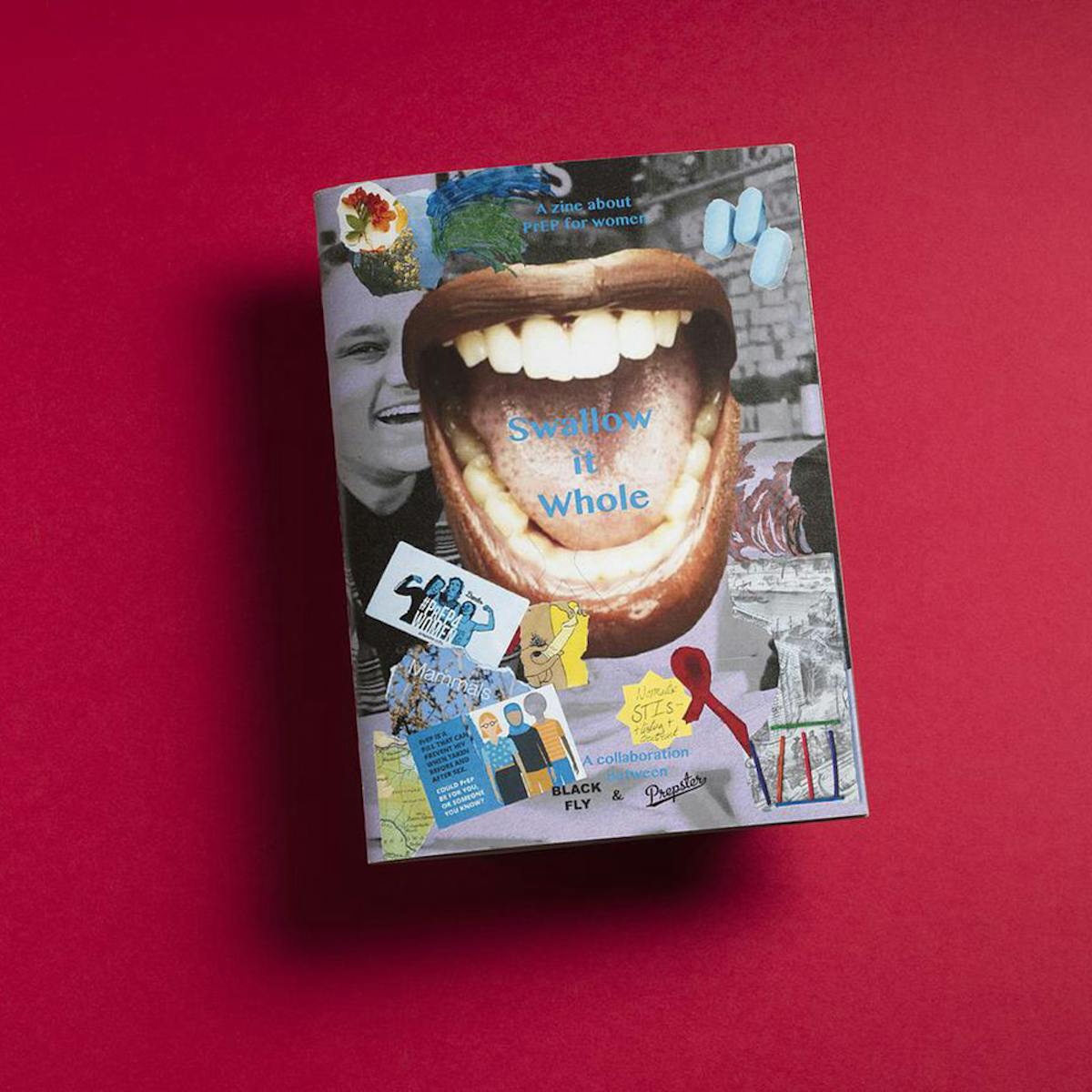
Wellcome Collection began collecting zines in 2016 after a conversation between Wellcome librarians Nicola Cook, Loesja Vigour, and Mel Grant who each noticed a surge in perzines related to mental health. Today, the collection holds over 1,400 zines which reflect Wellcome’s focus on health and human experience.
The challenge of zines
Zines present a unique challenge to how museums and libraries collect and categorise objects, as well as the ethical responsibilities they have to zine makers and their communities. The librarians at Wellcome Collection responded to these challenges in various ways, drawing on the experiences of other librarians as documented in the ‘Zine Librarian’s Code of Ethics’ zine.
Rather than receiving purchased and donated objects from around the world, Wellcome’s librarians sought out zine makers online, at zine fairs and exhibitions, in community groups, and individually. This allowed the team to identify and collect zines that might have otherwise gone unnoticed. It also allowed the zine collection to develop in dialogue with zine-making communities.
The librarians in the collections team also decided that the category of zines should be determined by zine makers. If the maker said what they had made was a zine — whether it was a single sheet of paper or a bound, multi-page work — then that was how it would be categorised in the collection.
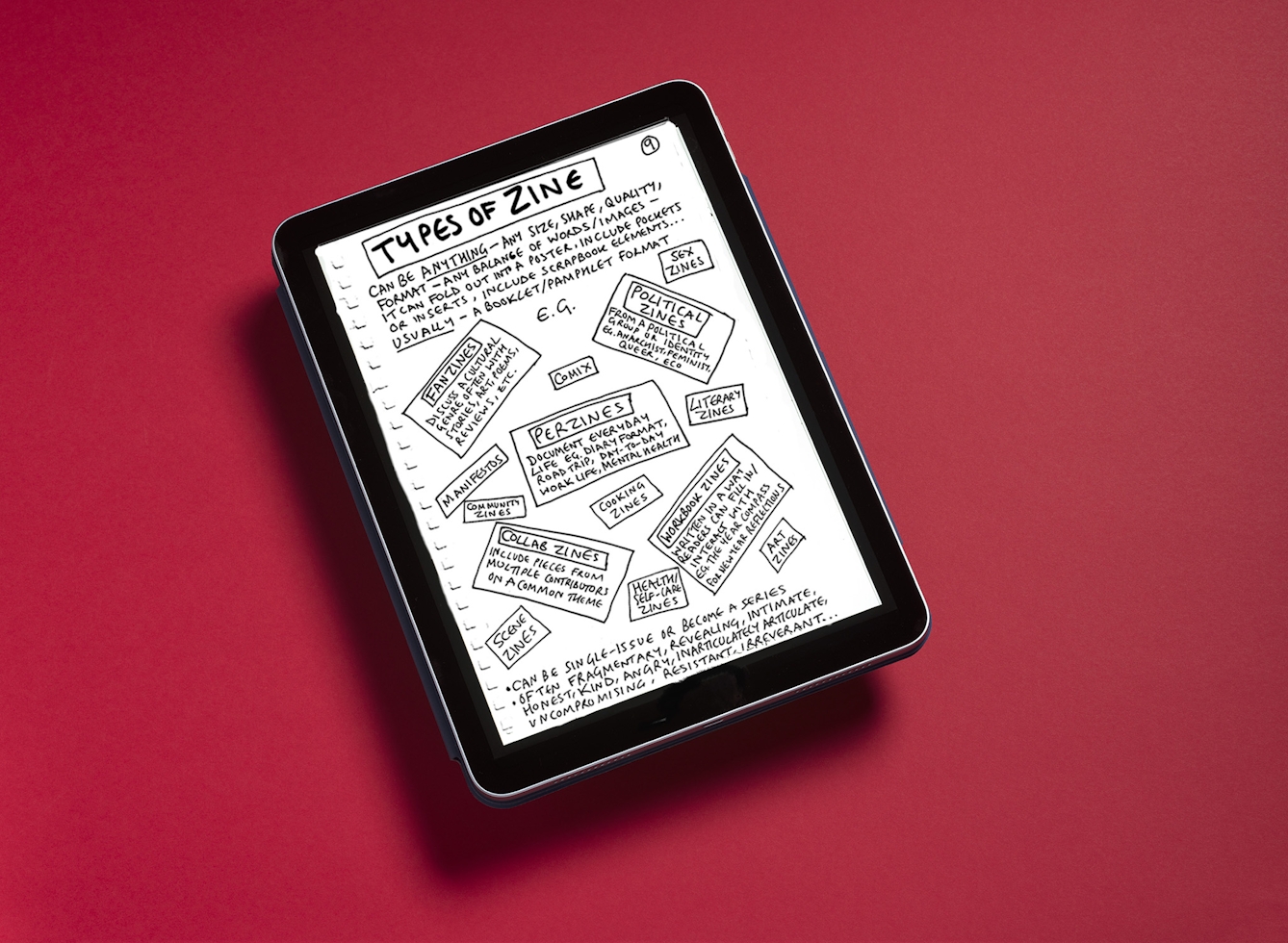
‘Zine-maker: a zine about zining(view in catalogue)’, a digital zine created by Meg-John Barker.
In this page from ‘Zine-maker: a zine about zining’, creator Meg-John Barker confirms that zines “can be anything – any size, shape, quality, format”.
Many zines are a size and shape that is easy to reproduce, like a folded A5 booklet, but there isn’t a single standard shape to a zine. Barker’s zine is handwritten, with the appearance of a page torn from a ring binder, which means that even though this is a digital zine, it stays connected to the paper materials with which it was made. Where typewritten text can give a sense of disembodied authority, the handwriting makes the author more visible as a person.
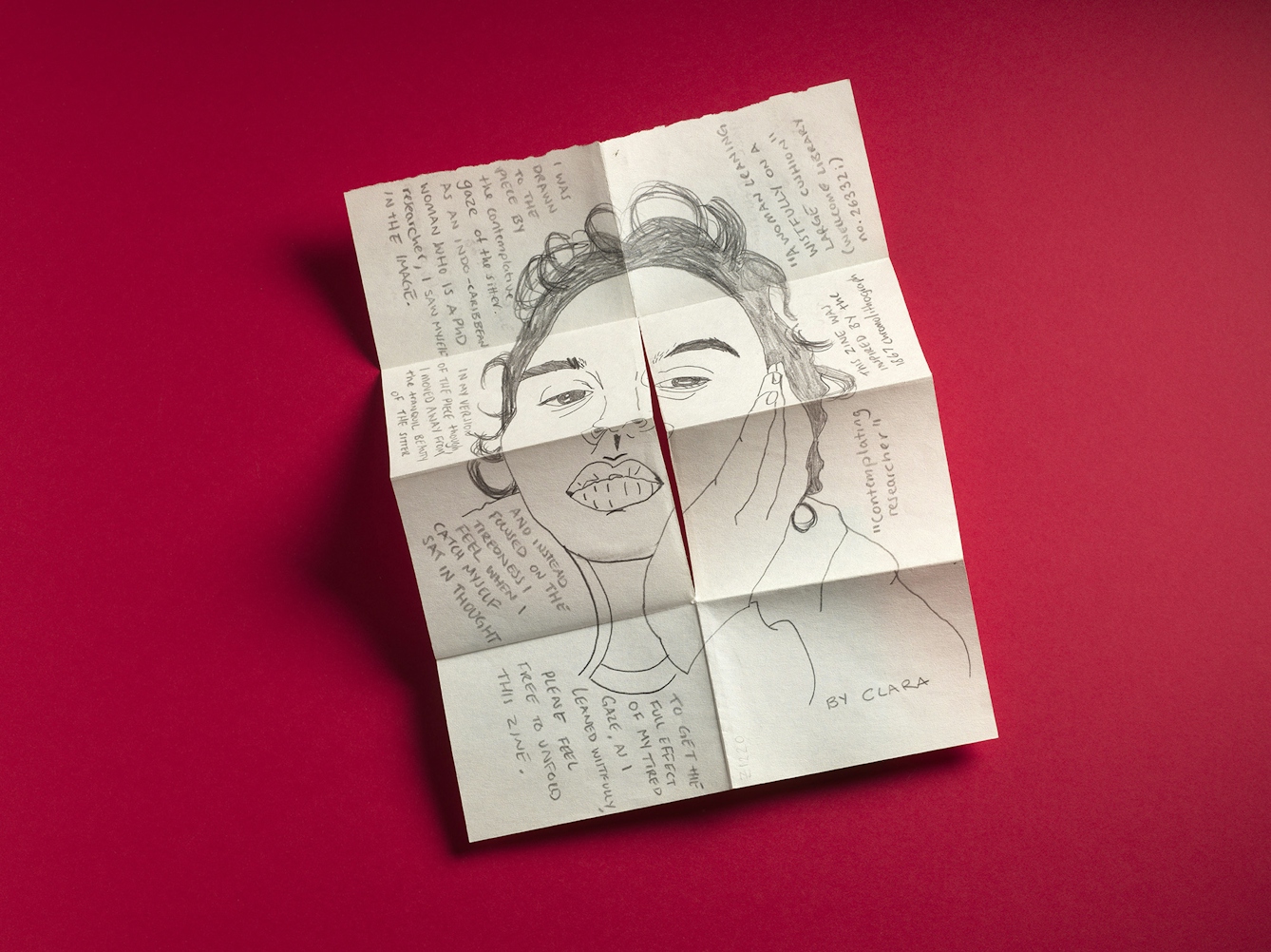
'Contemplating researcher' is a single folded paper zine inspired by an illustration held by Wellcome Collection.
'Contemplating researcher' is a zine made by Clara Searle during a workshop she led, which explored the experiences of PhD researchers of colour. The large pencil drawing that spills across all pages of the zine is visible only in fragments when the zine is folded. It was inspired by an illustration in the collections, labelled 'A Woman leaning wistfully on a large cushion'(view in catalogue).
Searle describes being drawn to the image. However, rather than attempting to echo the sitter, she focuses on "the tiredness I feel when I catch myself sat in thought". Searle doesn’t have to tell us this though, the unfolded image conveys a deep fatigue, her face gently resting in her hands.
Third space knowledge
Loesja Vigour from the collections team explains how zines filled a gap in Wellcome’s collections, bringing “the voices of people talking about their health, living with health conditions and sharing their experiences of what it meant to them to be LGBTQ+, disabled, minoritised or excluded from the mainstream”. The zines offer valuable insight that often is missing from conventionally published materials.
Some zines, rather than being straightforward accounts of their maker’s personal experiences, bring together lived experience with academic, professional and official knowledge – drawing connections between the different ways of knowing, blurring and blending them to create a new type of ‘third-space’ knowledge.
Third-space knowledge, as defined by academic and activist Adela C. Licona in her study of zines made by feminist, anti-racist zine makers of colour, is a form of knowledge that emerges from the space (or movement) between lived experience and professional or academic knowledge. It challenges the traditional boundaries between lived experience and medical practice, which institutions like Wellcome Collection have historically used to organise their collections.

'Swallow it whole' is a booklet zine that combines heath information with personal experiences of taking medication.
The makers of ‘Swallow it whole’ aim “to create a Black women-centred zine, which integrates pre-exposure prophylaxis (PrEP) messages with our existing sexual health concerns and represents us in our own image”. The zine combines information about PrEP, a medication that reduces the risk of getting the HIV virus, with collages, poems, prose and artwork around sexual health in general. The zine doesn’t treat PrEP, or the messaging around it, as something that people engage with in isolation from the rest of their experiences.
The creative offerings in this zine highlight the limitations of medical knowledge for engaging with experiences with PrEP. One of the contributors, Kuchenga describes a person aspect of taking PrEP: “Every morning, just after breakfast, I swallow something that gives me a reminder that my body is worth of protection”.
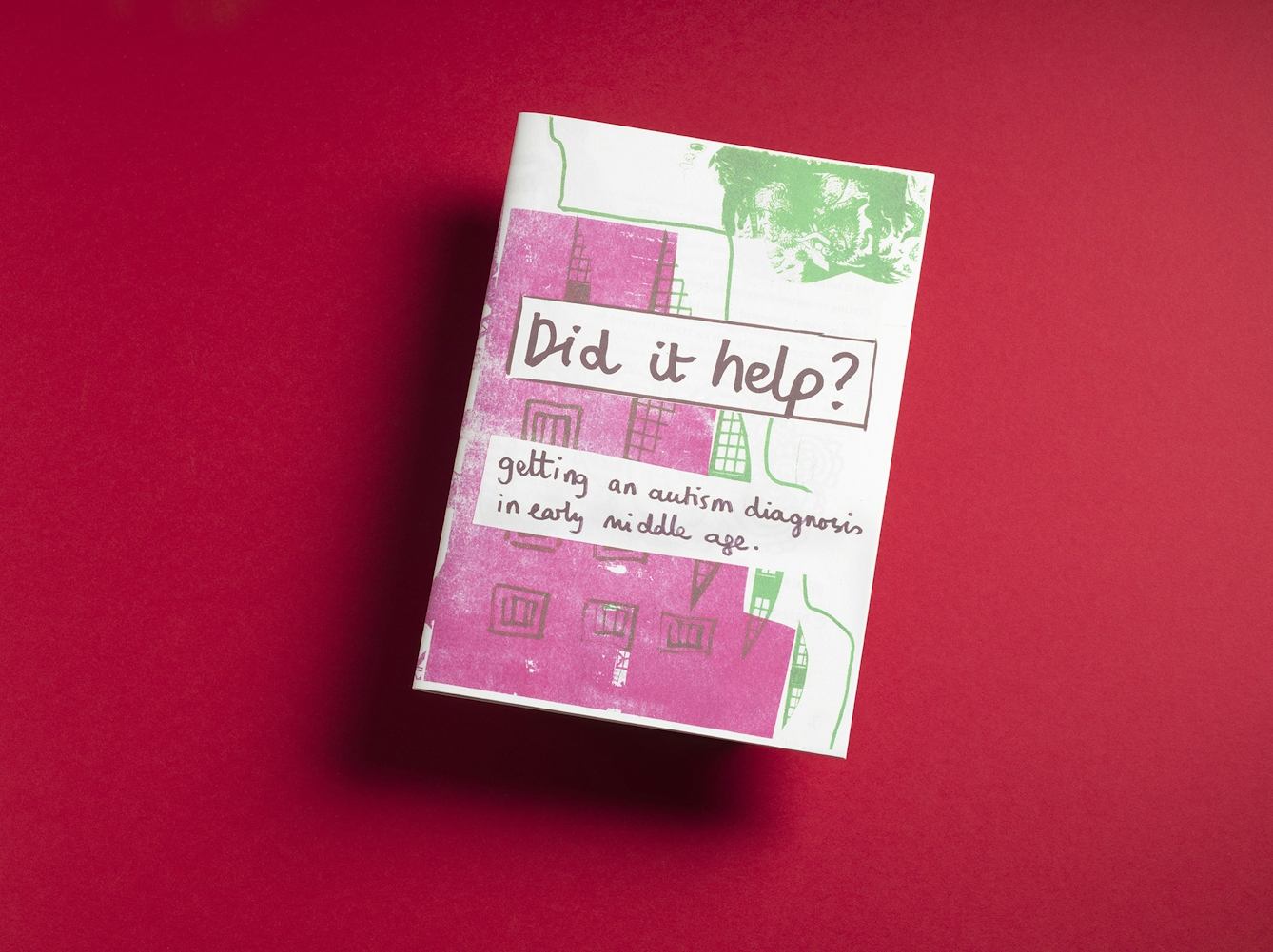
'Did it help?' explores what it means to be autistic beyond a medical diagnosis.
Medical diagnosis relies on privileging certain forms of knowledge; medical professionals have the authority to diagnose because they have specific training and education. The zine ‘Did it help?’ unpacks creator Heena’s experience of getting an autism diagnosis in their early 40s. They connect their present-day life and past memories to explore what it means to be autistic.
Heena’s sense of being autistic precedes the diagnosis, and they continue to reflect on the ways it “only explains things to an extent”. Throughout the zine, Heena holds onto the complexity of their lived experience and attempts to tease out the relationship between medical knowledge in the form of diagnosis, and their everyday life.
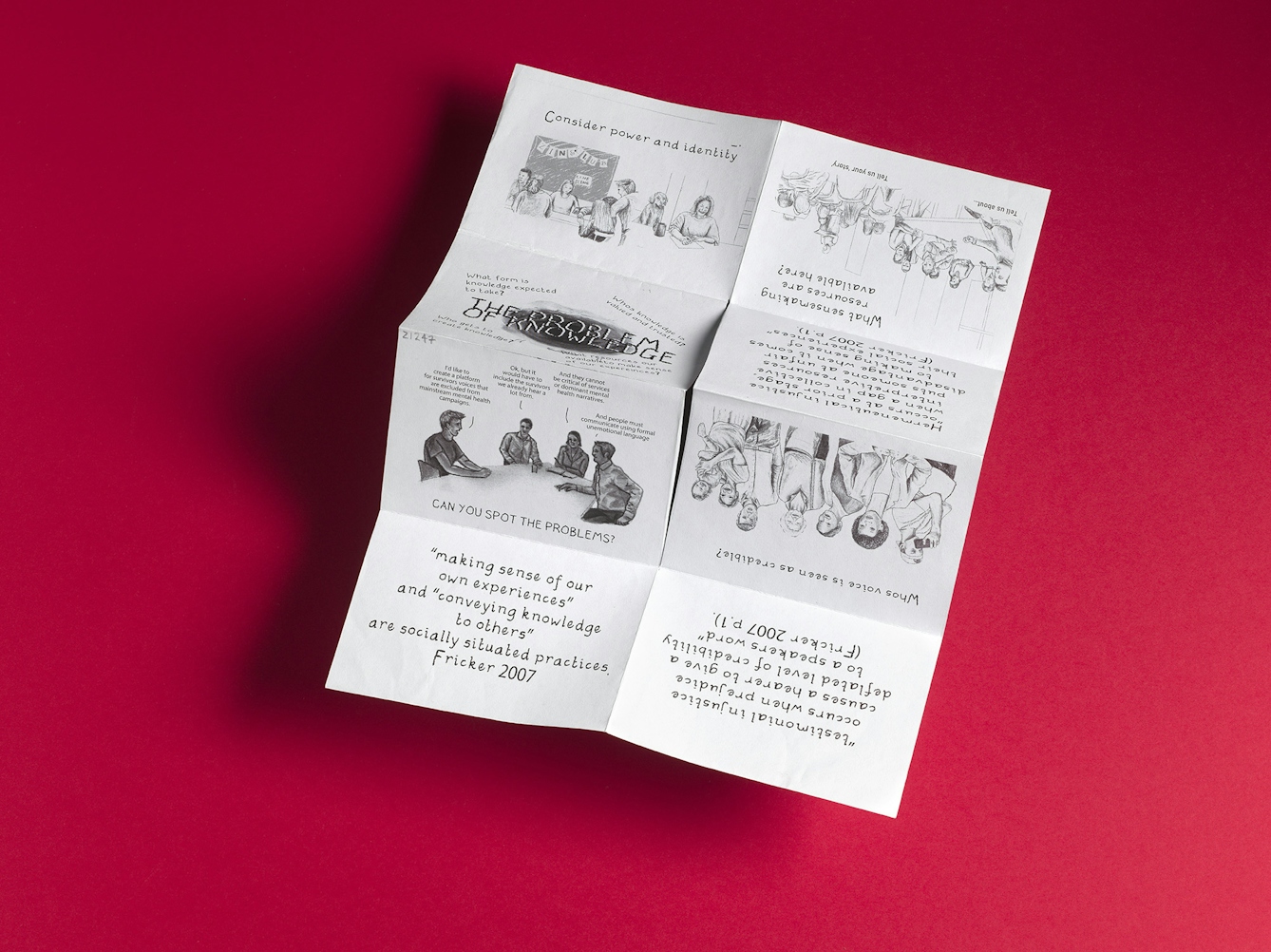
'The problem of Kowledge' is a pocket zine that explores how some knowledge and experiences of health are undervalued.
On a page of this pocket zine ‘The Problem of Knowledge’, PhD researcher Tamsin Walker illustrates a conversation between a group of people around a table. A figure in a t-shirt proposes a platform for survivor voices that have been excluded from mainstream mental health campaigns. The three figures in formal clothing undermine the value of this with their questions.
The quote beneath this illustration connects the conversation to the work of philosopher Miranda Fricker on ‘epistemic injustice’ – the result of undervaluing or dismissing the knowledge of someone because of their identity. An example of epistemic injustice is when the voices of people living with a particular condition aren’t present in museums or libraries because they aren’t academics or medical professionals. Walker’s zine invites us to tangle out epistemic injustice in real-life situations.
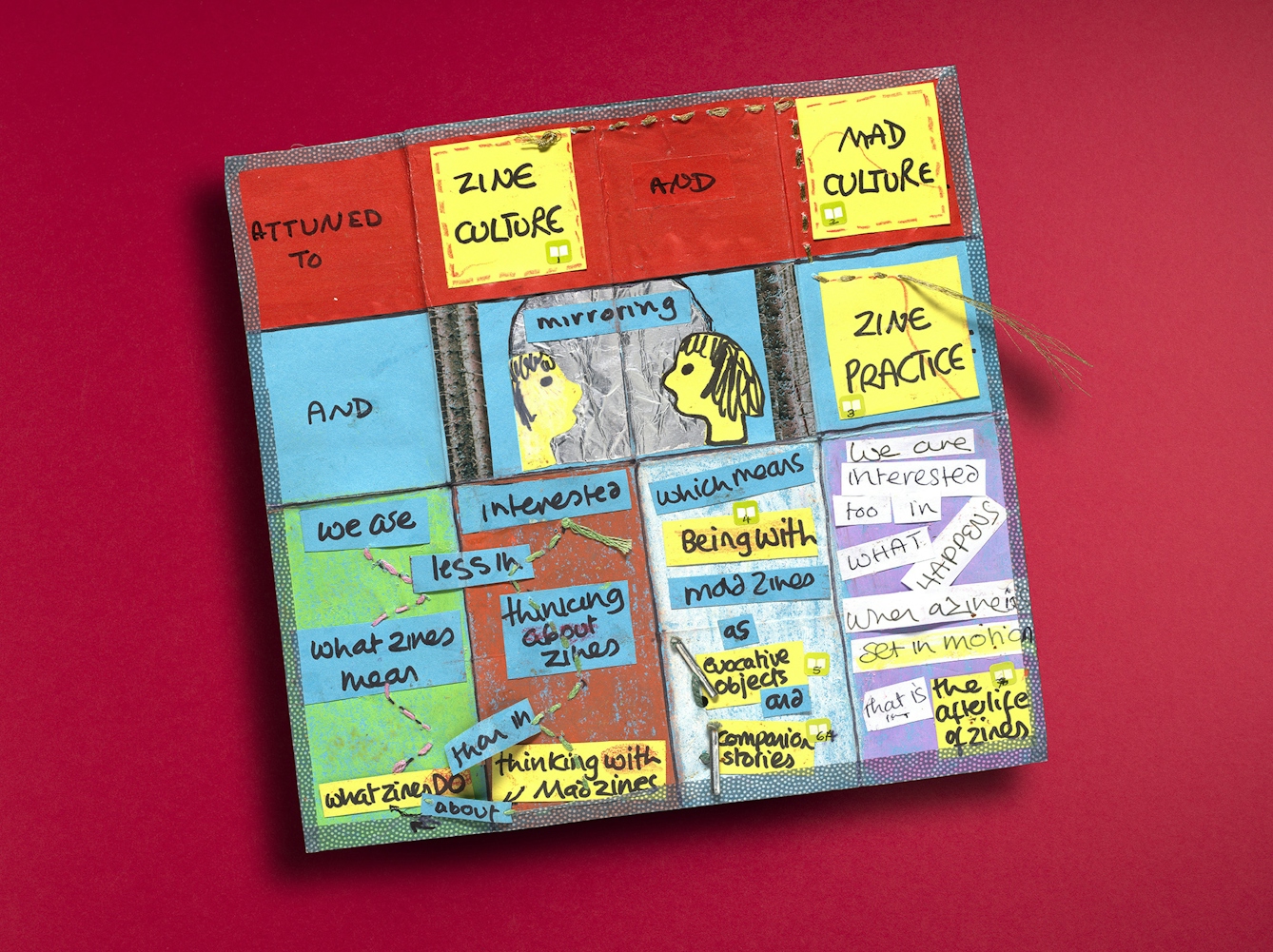
The creators of 'MadZine Methodology' aim to use the potential of MadZines to challenge prevailing understandings, diagnoses and treatments around mental health.
In crafting ‘MadZine Methodology’, Jill Anderson and Hel Spandler from the MadZines project used the zine-making process to think with zines rather than just about them – making explicit how both research and zines create knowledge. Usually, the final output from a research project is a book chapter or journal article, but here they are using the form of a zine to offer, or craft, a different form of knowledge. Rather than their research being separate from and potentially inaccessible to the people whose zines they’re studying, the makers are instead working in the same form.
Disrupting the museum
Sometimes, the content of a zine directly challenges the ways museums replicate or perpetuate stereotypes and systematic oppression in their categorisations or displays. The title of this zine, ‘The Blob’, is Charlotte Cooper’s name for a sculpture by John Isaacs, which was in the ‘Medicine Now’ exhibition at Wellcome Collection until 2019. This zine accompanied a dance performance by Cooper and Kay Hyatt at Wellcome Collection.
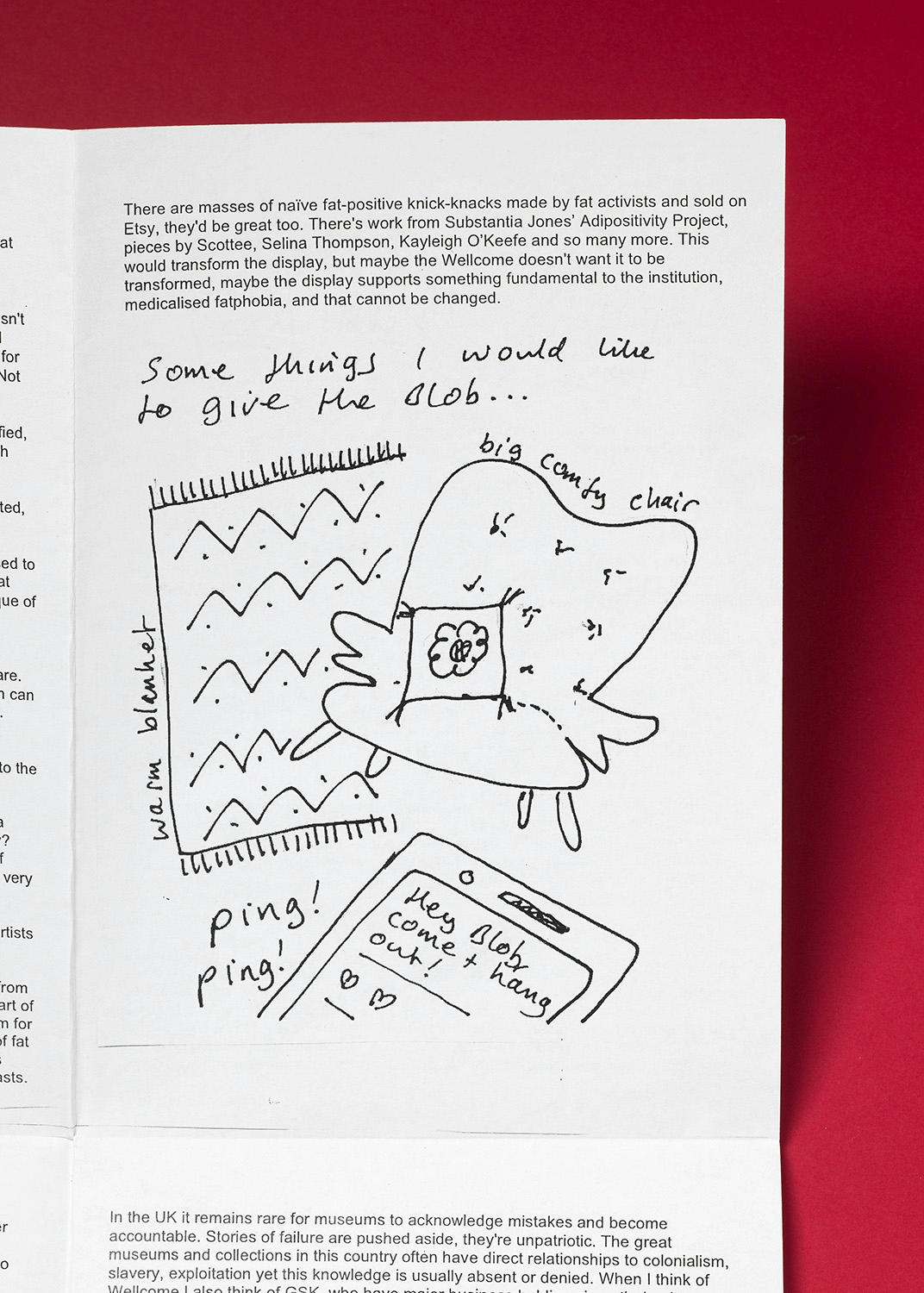
'The Blob' was the result of an event at Wellcome Collection. Both the zine and the performance directly challenged an artwork about obesity that was on display in Wellcome Collection.
In the zine, Cooper explores the ways that this sculpture manifests a specific obesity discourse, reflects power, and fatphobia. The illustration from the zine details how she would like to give the Blob a warm blanket, a big comfy chair and send them texts, inviting them to hang out. This offering contrasts with the original exhibition display, which offered clinical display labels and the relentless gaze of visitors.
Zine culture in the museum
Alongside the development of the zine collection, Wellcome Collection has engaged with audiences and communities through a regular zine club, organised by staff, and through one-off zine workshops, inviting people to explore different themes and respond through their own zines which can be added to the collection.
In ‘Queering Wellcome Collection’ creator Rowan Frewin offers insights into specific objects in the rest of the collection, viewing these through current understandings of LGBTQ+ lives and experiences. Frewin responds not just to the presence of queer history in Wellcome Collection, but to its absence, and offers a different perspective on how these objects are recorded and presented in the collections, highlighting the epistemic injustice inherent in their misrepresentation or absence.
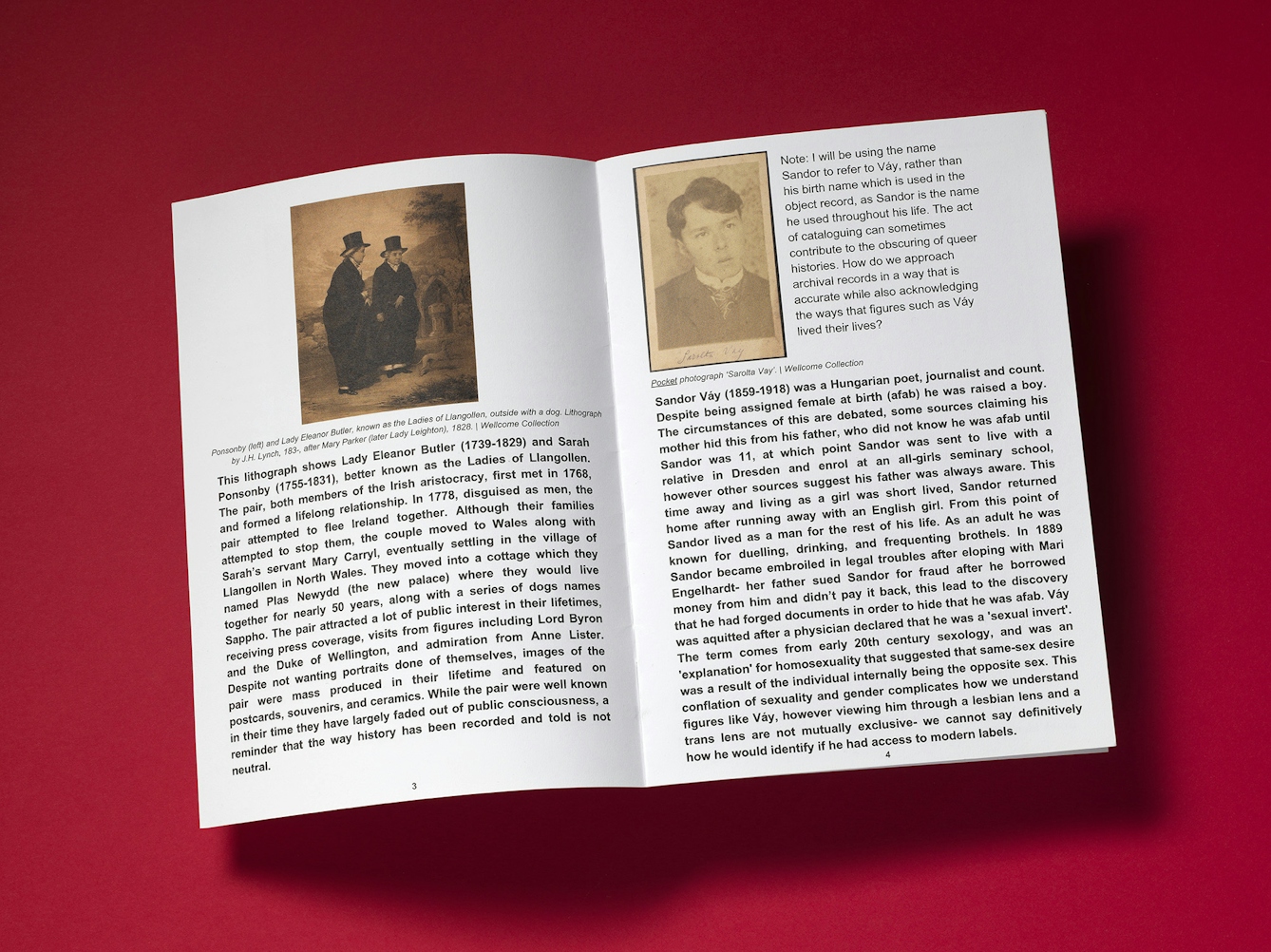
The zine 'Queering Wellcome Collection' was the result of a workshop that examined representations (and absences) of LGBTQ+ lives and experiences in the collections.
Collecting and presenting zines within a museum setting raises serious ethical questions. In response, the collections team at Wellcome developed an ethical framework for collecting and cataloguing zines. Zine makers are notified when their zines are acquired and consulted on how their work is described in the collection catalogue. Crucially, zine-makers can request their zines removed from the collection at any point.
Bringing zines into the Wellcome Collection not only introduced new voices and new perspectives on health and the human experience to the collections, it also introduced new ways of working with a collection. The approach the collections team took was shaped by the needs of the zines they were collecting, and this continues to shape Wellcome’s approach, for example in the exhibition ‘Zines Forever!’ and in the article you are currently reading.
About the author
Lilith (Lea) Cooper
Lea Cooper is a zine-maker and zine librarian at Edinburgh Zine Library. They recently completed a practice-based PhD working with the zines at Wellcome Collection. They live on the Fife coast in Scotland.
